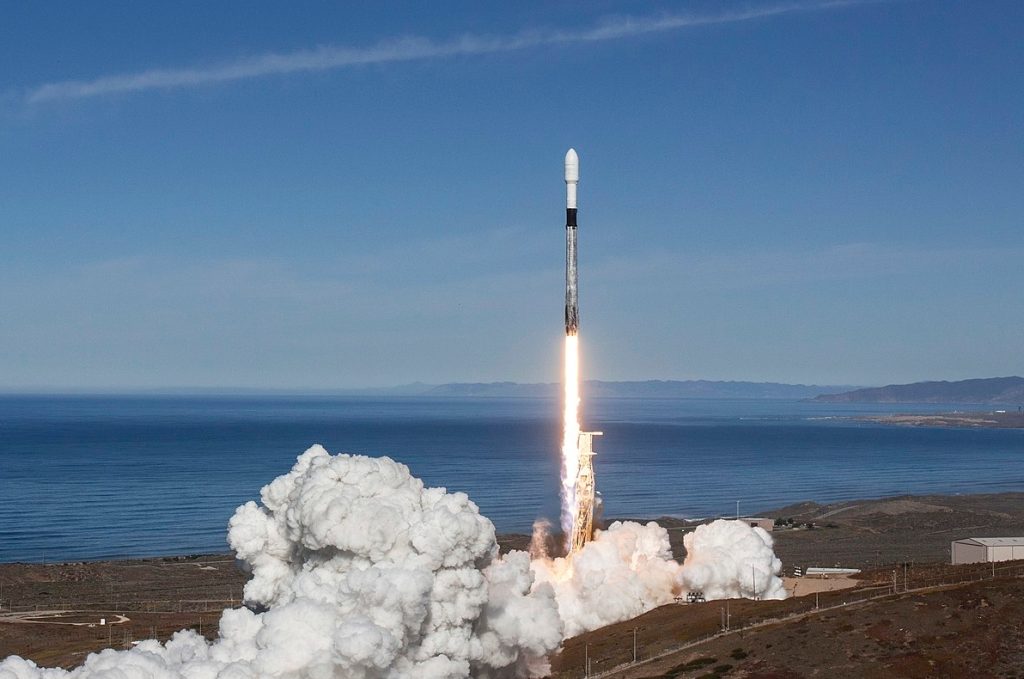1. Introduction
NASA’s CubeSat program represents a significant advancement in the field of small satellite technology, offering new opportunities for space exploration, scientific research, and commercial ventures. CubeSats, which are compact and cost-effective satellites, are often launched as part of commercial rideshare missions, enabling multiple payloads to share a single launch. This approach not only reduces costs but also accelerates the deployment of innovative space technologies. This article delves into the intricacies of NASA’s CubeSat launches, exploring their technological aspects, commercial implications, and future potential.
2. What are CubeSats?
2.1 Definition and Structure
CubeSats are small, standardized satellites designed to provide a cost-effective solution for space research and exploration. They are typically built in modular units called “cubes,” each measuring 10 x 10 x 10 centimeters and weighing about 1.33 kilograms. A CubeSat can consist of one or more of these units, allowing for a variety of configurations. The standardized nature of CubeSats enables them to be easily integrated into different launch vehicles and platforms.
2.2 Advantages of CubeSats
CubeSats offer several advantages over traditional satellites:
- Cost-Effectiveness: Their small size and standardized design make CubeSats significantly cheaper to build, launch, and operate.
- Rapid Development: The modular design allows for faster development and deployment of CubeSats compared to larger satellites.
- Innovation: CubeSats provide a platform for testing new technologies and conducting experiments that may pave the way for future missions.
3. CubeSat Launch as Commercial Rideshares
3.1 Concept of Rideshare Launches
Commercial rideshare launches involve deploying multiple satellites from different organizations aboard a single launch vehicle. This approach significantly reduces launch costs by sharing the expense among multiple payloads. CubeSats are particularly well-suited for rideshare missions due to their compact size and standardization.
3.2 NASA’s Role in Rideshare Launches
NASA actively participates in commercial rideshare missions to maximize the utility of its launch vehicles and support the broader space community. By integrating CubeSats into rideshare launches, NASA facilitates:
- Diverse Missions: Supporting a variety of scientific, exploratory, and commercial missions that contribute to the overall advancement of space technology.
- Partnerships: Collaborating with commercial entities and international partners to enhance the reach and impact of space missions.
4. Technological Innovations Enabled by CubeSats
4.1 Scientific Research
CubeSats enable a range of scientific investigations by providing a platform for experiments and observations in space. Notable examples include:
- Earth Observation: CubeSats equipped with imaging sensors can monitor environmental changes, natural disasters, and climate patterns.
- Space Weather: Instruments on CubeSats can study solar radiation, magnetic fields, and other space weather phenomena to better understand their effects on Earth.
4.2 Technology Demonstration
CubeSats are an ideal platform for testing new technologies and concepts. Examples include:
- Advanced Propulsion: Testing innovative propulsion systems in space conditions, which could lead to more efficient spacecraft.
- Communication Systems: Evaluating new communication technologies that could enhance data transmission and reception capabilities.
4.3 Exploration Missions
CubeSats contribute to exploration missions by providing additional data and support for larger spacecraft. They can:
- Act as Relays: Serve as communication relays for missions to distant planets or asteroids.
- Conduct Preliminary Studies: Perform initial investigations of celestial bodies to inform future missions.
5. Notable CubeSat Missions
5.1 The Lunar IceCube
The Lunar IceCube mission, part of NASA’s Artemis program, aims to search for water ice on the Moon’s surface. The CubeSat will conduct detailed observations of lunar ice deposits, which are crucial for future lunar exploration and habitation.
5.2 MarCO (Mars Cube One)
MarCO was a pair of CubeSats that accompanied NASA’s InSight lander to Mars. These CubeSats demonstrated the ability to relay data from the lander back to Earth, providing valuable communications support during the landing phase.
5.3 TESS (Transiting Exoplanet Survey Satellite)
TESS is a mission designed to search for exoplanets by observing the light curves of stars. While not a CubeSat itself, TESS has utilized CubeSat technology for certain mission components, showcasing the versatility and integration of CubeSats in various missions.

6. Commercial and International Collaborations
6.1 Commercial Partnerships
NASA’s involvement in commercial rideshare launches often includes partnerships with private companies. These collaborations offer several benefits:
- Cost Sharing: Reducing the financial burden on individual organizations by sharing launch costs.
- Access to Space: Providing smaller companies and organizations with access to space that might otherwise be unavailable.
6.2 International Cooperation
CubeSats often feature international collaboration, with missions involving contributions from space agencies and research institutions worldwide. Such cooperation enhances global scientific research and promotes shared technological advancements.
7. Challenges and Solutions
7.1 Launch Integration
Integrating CubeSats into a shared launch vehicle presents several challenges, including:
- Payload Accommodation: Ensuring that CubeSats are properly integrated into the launch vehicle and that their deployment mechanisms function correctly.
- Mission Coordination: Coordinating the timing and sequencing of multiple CubeSat deployments to ensure successful mission operations.
7.2 Space Environment
CubeSats must operate in the harsh environment of space, which poses challenges such as:
- Radiation Exposure: Designing CubeSats with adequate shielding to protect sensitive electronics from space radiation.
- Thermal Management: Implementing thermal control systems to maintain operational temperatures within the CubeSat.
8. Future Directions
8.1 Advancements in CubeSat Technology
The future of CubeSat technology holds several exciting developments:
- Enhanced Capabilities: Increasing the functionality and performance of CubeSats through advancements in miniaturized technology and materials.
- Interplanetary Missions: Expanding the use of CubeSats for missions beyond Earth orbit, including interplanetary exploration and deep-space research.
8.2 Expanding Commercial Opportunities
As CubeSat technology continues to evolve, commercial opportunities are likely to expand:
- New Market Segments: Exploring new applications and market segments for CubeSats, including telecommunications, Earth observation, and space tourism.
- Increased Collaboration: Strengthening partnerships between NASA, commercial entities, and international partners to leverage the full potential of CubeSats.
8.3 Supporting Space Exploration Goals
CubeSats will play a crucial role in supporting NASA’s long-term space exploration goals, including:
- Lunar Exploration: Contributing to missions aimed at exploring and utilizing the Moon’s resources.
- Mars Exploration: Providing support for missions to Mars and other celestial bodies through advanced CubeSat technologies.
9. Conclusion
NASA’s CubeSat program and its involvement in commercial rideshare launches represent a transformative approach to space exploration and technology development. By leveraging the benefits of CubeSats, including cost-effectiveness, rapid development, and innovative capabilities, NASA and its partners are advancing scientific research, supporting exploration missions, and fostering commercial opportunities in space. As CubeSat technology continues to evolve, it will play an increasingly vital role in shaping the future of space exploration and contributing to humanity’s understanding of the cosmos.

















































Discussion about this post